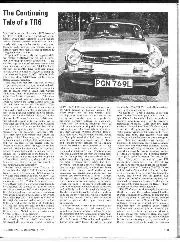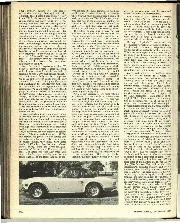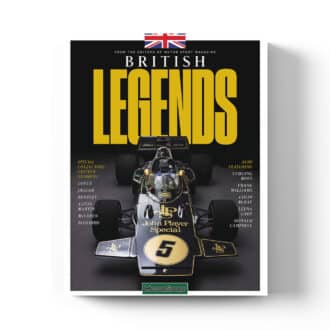

The continuing tale of a TR6
My saga in the November 1973 issue of Motor Sport of my unfortunate experiences with a new Triumph TR6 provoked several hundred readers into writing to us, mostly with very…
SPORTING CARS FOR 1928. A FEW NOTES ON SPORTS CARS EXHIBITED AT OLYMPIA.
By R.
L. W.
SINCE the visit of the enthusiast to the Olympia Show means a critical scrutiny of the new season’s sports models, a brief survey of the more interesting exhibits will aid the sporting owner in his wanderings from stand to stand.
Following the general rule of the past few years, there are no revolutionary designs, and no startling innovations in the 1928 programmes. The general principle appears to be detail improvements in well tried design, which is more satisfactory to the potential buyer than experimental layouts which have not had the test of the ordinary user’s experience.
An outstanding example of detail improvement is seen on the Mercedes Stand, where, on the 36/220 model the chassis has been brought several inches lower.
This” Grand Prix Sports” model must rank among the very elite of sporting cars, and gives a performance even better than the older model, tested by Motor Sport two months ago. This latter model attained a speed of 100 m.p.h. on the open road, which augurs well for the maker’s claim with the new chassis, of 110-125 m.p.h.
Items of note are the transverse position of the rear Hartfords, the duplex snubbers on the front axle, the great size of the 4-wheel brake drtuns, and the extremely neat housing for the spare wheel.
All models from the 2-litre to the 36/220 are sixcylinder and supercharged. The price of the 36/220 Grand Prix chassis is £2,000.
Approaching the revolutionary in body design is the new Air Saloon Body fitted to the Lancia “Lambda.” This break with convention is calculated to create a sensation in sporting circles, as the design offers a definite solution to the problem of saloon comfort in a really ” sports ” body.
The striking appearance of this coachwork is brought about by careful stream lining combined with utility.
Internal equipment, amounting almost to furniture, includes a wireless set and luncheon outfit, both housed in polished walnut cabinets. A roof searchlight, an air speed indicator, altimetre, gradient meter and an electric fan ; altogether the car bristles with novel features. No visitor to the Show should miss what is without doubt a sensational exhibit.
Schneider models for 1928 are little changed from the 1927 production. Improvements have been effected in detail only. The 10/30 chassis is priced at £225; the 13/55 at 2440, the 13/55 Sports Touring £580 and the Sports Saloon 13/55 at £675. The Sports Model Aston-Martin in its 1928 form pro
rides an excellent sports car at £495 with 3-seater at 2575. The engine is 1i litre, overhead camshaft giving 11.9 R.A.0 rating, taxed at £12 only. A four cylinder, fitted with Electron pistons yielding 1485 c.c., forms the power unit, with dual magnetos and pressure feed.
Amilcar in 1928 guise offers a Grand Sports model priced at £250 chassis of 8-9 h.p. or 9 h.p. at £254. Both these are 4 cylinder side valve engines capable of 70 m.p.h.
There is a 12 h.p. six cylinder racing chassis, a modified edition of which will be marketed at a considerably less price than for the same chassis last year. Messrs. Vernon Balls, Ltd., are now sole concessionaires for this marque.
In the A.C. range chief interest will centre in the 16/66 Montlhery model. This chassis has six cylinder engine, overhead camshaft and a speed of 85 m.p.h. This is priced at £630 for the 2-seater body. There is also the 12/40 four cylinder giving about 70 m.p.h. stripped, at 2375 for a two seater body.



